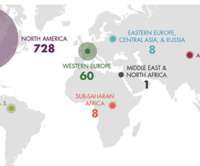A crash course on trends analysis using Candid’s Foundation 1000 data set
Candid
SEPTEMBER 21, 2023
In comparison, our Foundation 1000 data set is limited to grants of $10,000 or more awarded by a set of 1,000 of the largest U.S. ii Finally, we “freeze” the Foundation 1000 annual sets (however, significant changes to our data or taxonomy periodically require us to update these static data sets.) What is the Foundation 1000?











Let's personalize your content